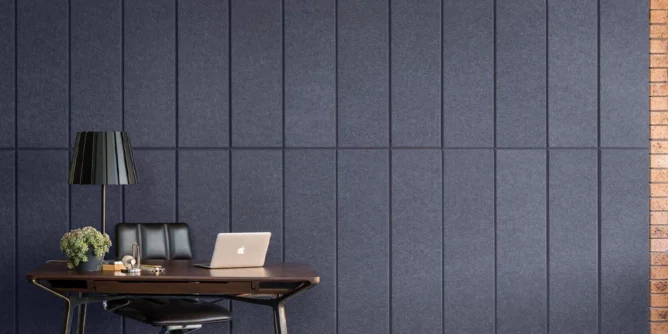
Improving sound quality and noise management in many settings including businesses, schools, music halls, and residences depends on acoustic wall panel, which are absolutely essential. The science underlying these panels is in their capacity to absorb, disperse, and reflect sound waves, hence lowering undesired noise and enhancing acoustic clarity. Knowing the materials and methods used in their design helps one to see how they may greatly improve the comfort and acoustics of a space.
The Operation of Acoustic Wall Panels
Acoustic wall panels work by absorbing sound waves, so stopping them from bouncing off hard surfaces and generating echoes. Sound travels in waves; when it strikes a surface, it either reflects, diffuses, or gets absorbed. Designed to maximize sound absorption at certain frequencies, especially in the mid-to-high range, the panels help to minimize noise disturbance and disrupt speech quality. Sound waves striking an acoustic panel imprison the sound energy in the panel’s porous or fibrous material, therefore transforming it into heat. Sound absorption is the term for this method, which lowers the strength of the reflected sound waves. The denser and more porous the material, the more it may absorb sound.
Materials Employed in Acoustic Panels
The materials used in the building of acoustic panels mostly determine their efficacy. Among the most often used materials are fabric-wrapped panels, mineral wool, fiberglass, and foam.

Foam Panels: Lightweight, simple to install, and great sound absorbers are foam panels. Often seen in places like home theaters and recording studios, they are
Fiberglass Panels: Known for their high-density characteristics, fiberglass panels are great at absorbing low-frequency noises, making them perfect for bigger areas where sound control is very important.
Mineral Wool: Especially in industrial environments or big open areas, mineral wool is quite good at reducing noise; it also has fire-resistant qualities.
Uses of Acoustic Wall Panels
Many places where sound management is important use acoustic wall panel. In offices, they help to lower background noise, hence enhancing staff concentration and output. In theaters or concert halls, they improve sound quality to guarantee audience clear audio. In residences, they lower noise between rooms or help to regulate outside noise; in recording studios, they are also frequently employed to generate a controlled acoustic space.
Acoustic wall panels and sound absorption are scientifically based on the characteristics of materials able to control sound waves. These panels serve to improve the acoustics of a room by using the correct materials and designs, hence lowering noise and raising general sound quality. Whether for business or personal usage, knowing how these panels operate may greatly enhance the sound experience in any setting.

